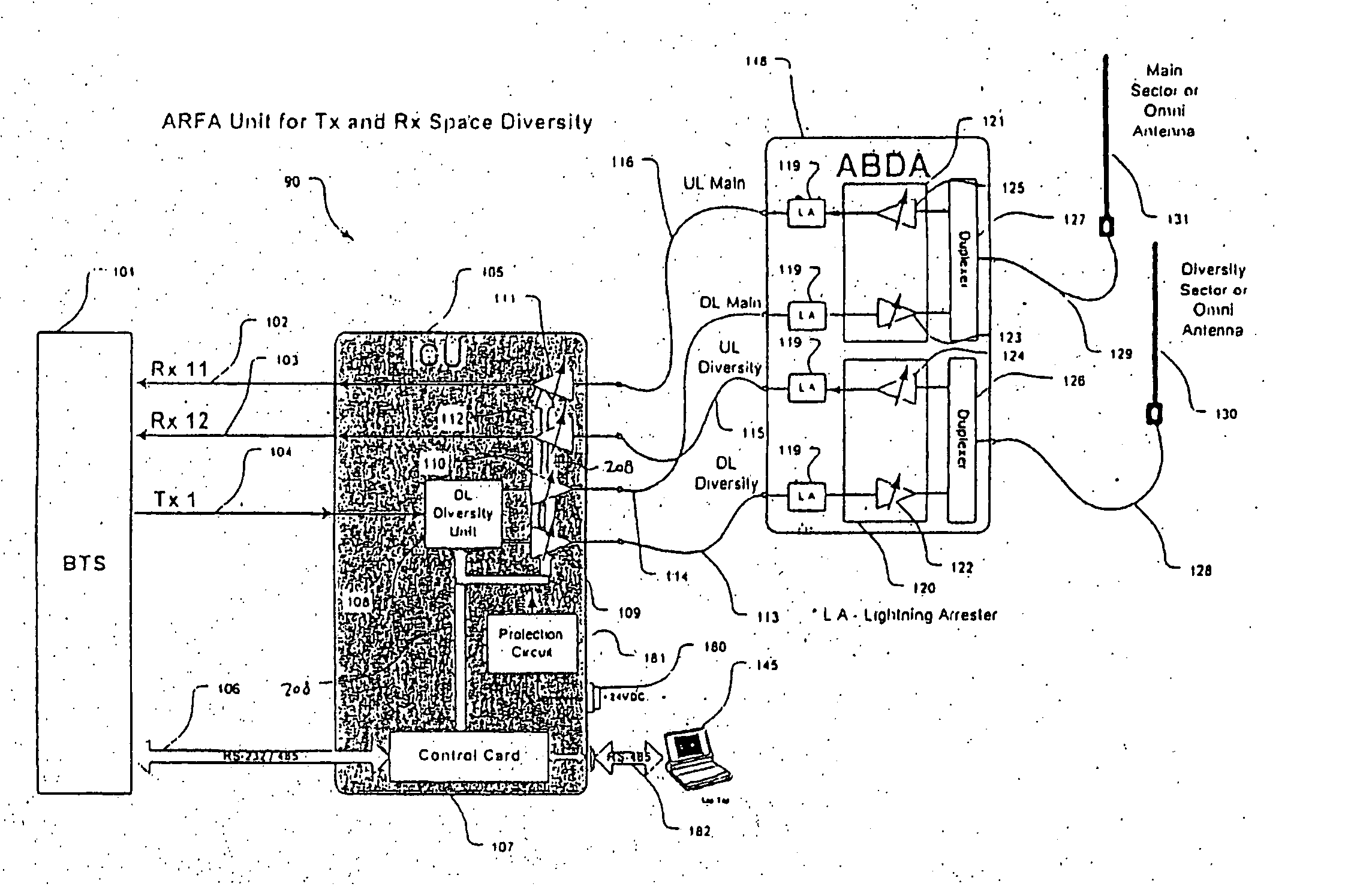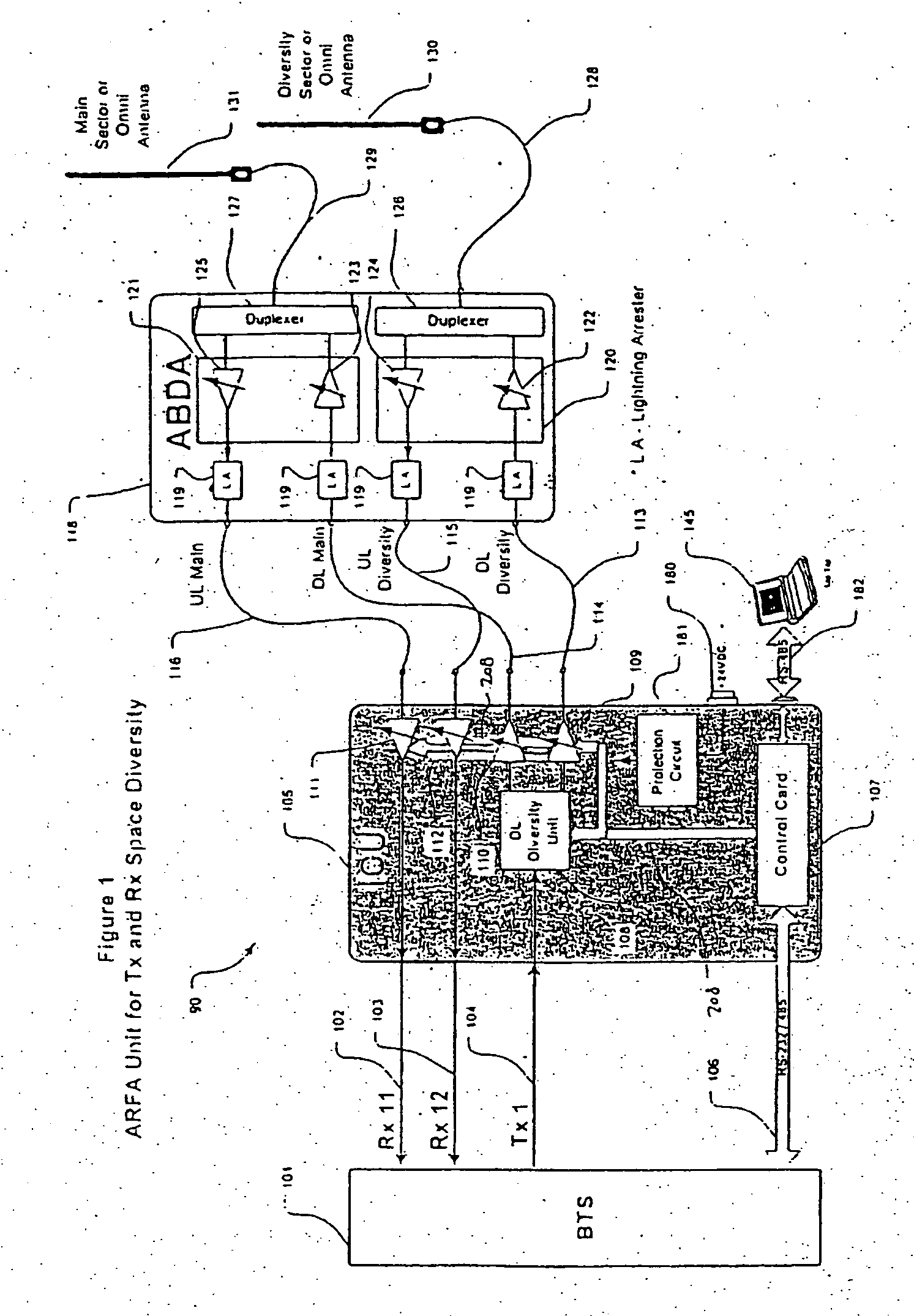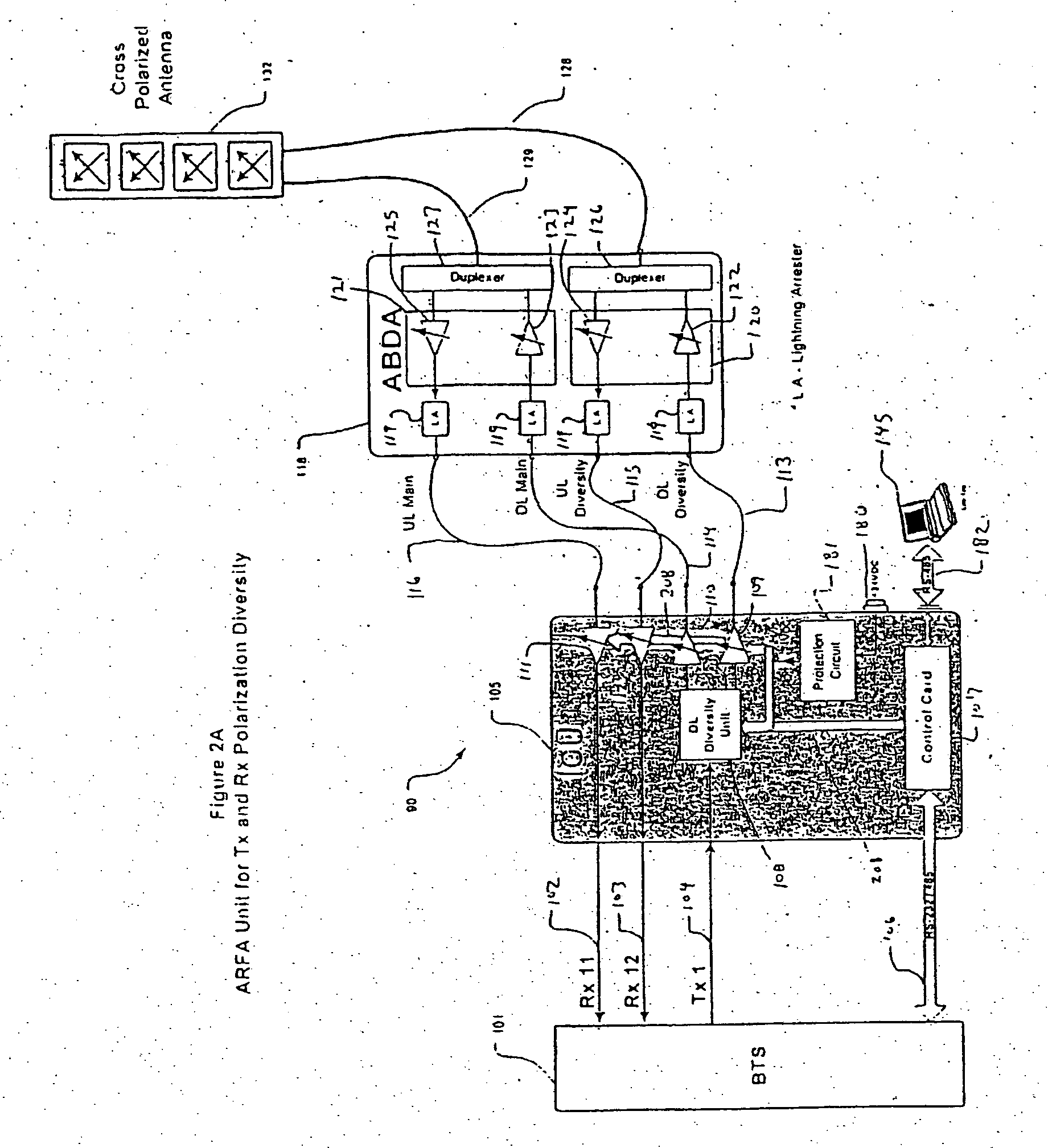Modular base station antenna control system
a module and antenna control technology, applied in the field of cellular communications, can solve the problems of significant alteration of network capacity, about 80 percent of network cost, and addition of costly infrastructure, so as to enhance base station performance, enhance base station coverage, and improve base station functionality
- Summary
- Abstract
- Description
- Claims
- Application Information
AI Technical Summary
Benefits of technology
Problems solved by technology
Method used
Image
Examples
Embodiment Construction
[0038] The present invention relates to an Advanced RF Access (ARFA) remote front-end unit of a base station, implemented in a wireless communications network. The ARFA unit enables coverage shaping and / or control of transmit and receive signals, such as RF downlink and uplink signals in a CDMA cellular network, and offers a low system noise figure. The ARFA unit is modular, generally including a control unit, located in close proximity to the base station, and a bi-directional amplifier (BDA), generally located in close proximity with the base station antenna and modified for full-duplex communications. The close proximity to the antenna enables the ARFA unit to support and control both coverage shaping and diversity features, enabling the use of fully adaptive array (i.e., “smart”) antennas, for example, with the salient low noise figure and multi-carrier power transmission of remote antenna and multi-diversity systems. The invention may further include an ARFA system manager, hav...
PUM
 Login to View More
Login to View More Abstract
Description
Claims
Application Information
 Login to View More
Login to View More - R&D
- Intellectual Property
- Life Sciences
- Materials
- Tech Scout
- Unparalleled Data Quality
- Higher Quality Content
- 60% Fewer Hallucinations
Browse by: Latest US Patents, China's latest patents, Technical Efficacy Thesaurus, Application Domain, Technology Topic, Popular Technical Reports.
© 2025 PatSnap. All rights reserved.Legal|Privacy policy|Modern Slavery Act Transparency Statement|Sitemap|About US| Contact US: help@patsnap.com



